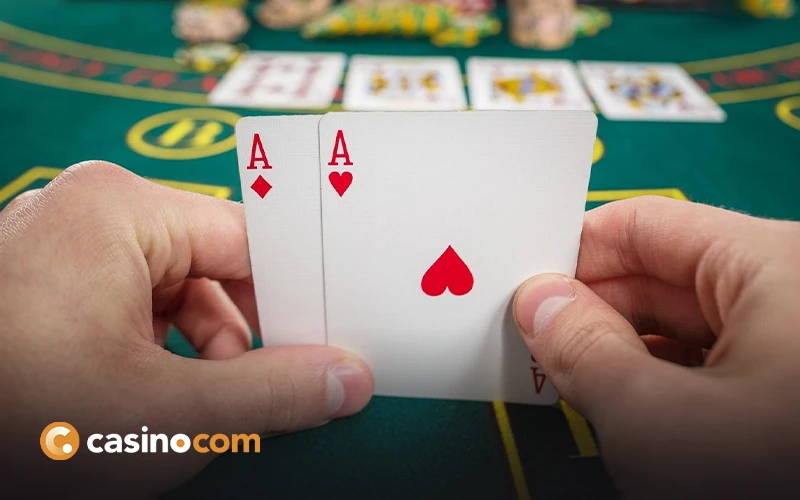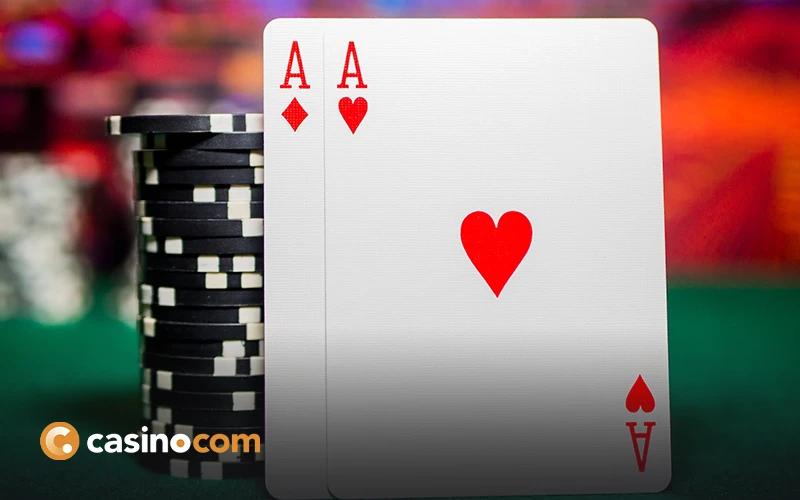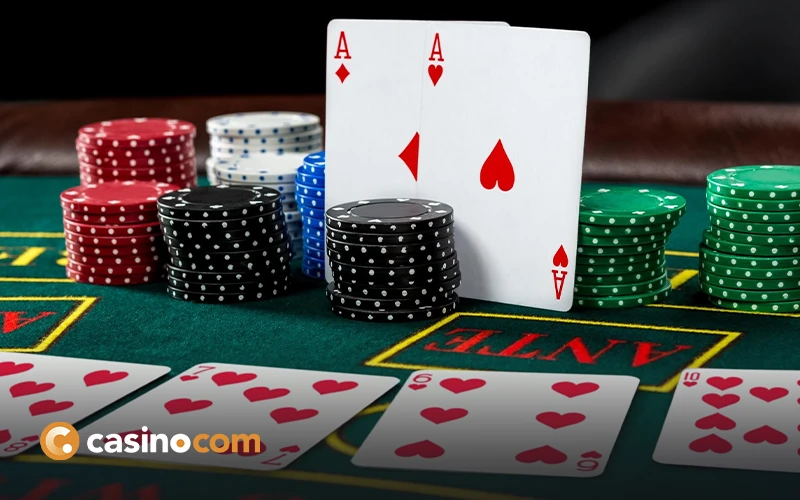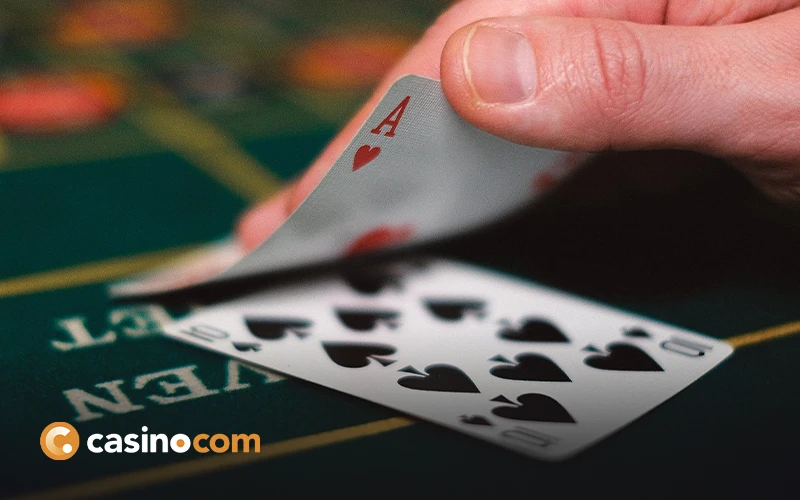Poker comes in different flavors. No matter what type you play, there will come a point where multiple players are left at the end of a particular hand. When it comes time to reveal the cards, taking an inordinate amount of time to show your hand is called slow rolling. And there is more to the act than meets the eye.
When playing poker in person – not at online casinos where movements are automated between all players – there are certain actions made by the player throughout. Some are just part of the game, but others can earn you the ire of your table mates.
There is one move known as the “slow roll” that is definitely frowned upon. It isn’t all that often that you see someone slow rolling, especially at casino tables, but you’ll know it when you see it. Let’s take a look at what slow rolling is, why it isn’t the best move to make, and when (if ever) slow rolling is okay.
What is a Slow Roll?
Poker is generally the same game, though there are variations. Some of the most common include five- and seven-card stud, Caribbean Poker, Texas Hold’Em, Omaha, and more. The rules change from game to game, but the goal is often to put together the best three- or five-card hand possible.
In poker, there is a move called the slow roll. This happens generally at the end of the hand but isn’t necessarily exclusive to that part in the game. It is the act of moving slowly before calling or revealing a hand.
You may see a player take a long pause before an important call, typically on an all-in bet. It even happens when the player has a very strong or potentially unbeatable hand. The player takes longer than normal to reveal their hand, typically occurring in some kind of showdown.
The act of slow rolling is a tricky one. Not only do they tend to wait before revealing their cards, but they tend to misrepresent their cards. They act as though they have lost or have a worse hand, only to reveal that they have the winning hand. It is a move that isn’t broken out often and is memorable – for the wrong reasons – when it does come up.
Why Slow Rolling isn’t Welcome
Slow rolling is typically not welcome outside of home games. The reason why it isn’t welcome is because it is considered to be poor etiquette at the poker table. Rules state that you should flip your hand over immediately after all bets have been settled whether you know you have the winning hand or not.
If you know that you have a winning hand – four of a kind, straight flush, royal flush, etc. – don’t keep your cards face down for very long. All it does is give your opponent false hope that they’ve won the hand when you basically know better.
It’s effectively rubbing salt in the wound. You know that you have the advantage and instead of simply showing the hand and taking your winnings, you drag things out and provide false hope. It can especially be tough in an all-in scenario where someone winds up getting knocked out.
Even doing it among friends is generally frowned upon. Doing it at a table of strangers is going to earn you their disdain, and the friendliness of the game will disappear. Think of it as effectively being sportsmanship in poker. We should all display good sportsmanship when playing poker.
Should You Slow Roll?
There are no strategies when it comes to the act of slow rolling. Simply put, you should basically never do so under any circumstances. In a home game with close friends may be fine because you know you will all be friends when all is said and done.
In order to avoid confusing your act with a slow roll, there are a few things to do at the end of a hand. Make sure to either muck or reveal your cards as soon as it is your turn to act. If you are calling a big bet, particularly an all-in, make sure you do it fairly quickly. You can think about it in truly tough situations, but not when you have a very strong hand.
Double-check your cards before you show your hand and never verbally misrepresent your hand. If you are relatively new to the game and aren’t quite sure, you can flip your cards over and let the dealer figure it out.
There are a few caveats where a slow roll may be understandable if not necessarily acceptable. As said before, it typically is only done among friends. Taunting is generally acceptable between friends and everyone will move on from the game with no hard feelings.
If you ever slow roll, don’t do it when there are major stakes on the line. The act of slow rolling will leave a bad enough taste in the mouth of the other person, let alone if there is a lot of money on the line. It is adding insult to injury and the other player will not soon forget what happened.
Live Poker Slow Rolls
When playing lie and in person, there is absolutely no excuse for slow rolling. You are only playing one hand at a time, so there is no excuse for not being focused on the hand being played. A slow roll will be seen as deliberate and (more than likely) insulting.
Playing online can change things, however. Most players are playing multiple tables at a time – known as multi-tabling – and their attention can be diverted elsewhere. That can mean a slower response than normal, which isn’t quite the same as slow rolling.
Don’t Confuse Slow Rolling with Hollywooding
There are certain actions that can look alike in the course of a poker game. It is all too easy to confuse slow rolling with something called Hollywooding. In poker, Hollywooding refers to a player who talks a lot when it comes time to make a decision.
A player who is Hollywooding is generally talking or acting in a way that is meant to garner a specific reaction from the other player. Essentially, it is a way of fishing for information to inform their decision as to whether to call or fold.
Make no mistake – both acts are frowned upon despite not being explicitly prohibited. Slow rolling is generally only done when you are the last to act, your opponent is all-in, and you’re head to head with that opponent.
Hollywooding can cover a few other bases. It can be done if your opponent isn’t yet all-in. Essentially, the player who is Hollywooding is looking for more information or trying to hide a timing tell. It’s acceptable but generally not a well-liked move by the player doing it.
You may also find Hollywooding in multi-way pots. This happens when you have the nuts, a player to your immediate right has gone all-in, there is one player left to act after you, and involves taking your time to act. Essentially, it is manipulating the hand to try to impact how the next player will act.
Players Hollywooding can appear weak in order to garner a call or attempt to seem strong in order to dispel another player from calling. Again, it isn’t explicitly illegal but you might not make a lot of friends by being a big talker, especially during big moments in the game.
Famous Examples of Slow Rolling
Throughout the long and storied history of big-stakes poker games, there have been a handful of memorable instances of slow rolling. Here are the three instances that tend to stand out in the minds of players everywhere.
1. Jack Ury, World Series of Poker Main Event (2009)
Though he is no longer with us, the late Jack Ury became the oldest player in the history of the WSOP Main Event at 97 years old. That year, Jack was in a hand with Steven Friedlander, seeing both players flop a full house. The flop was 6-6-7, giving Friedlander (6-7) sixes full of sevens, while Jack (7-7) had sevens full of sixes.
Jack bet on the flip, Steven raised immediately. He went all-in and said, “Why don’t we just get all the money in right now?” It was taunting but Jack immediately put his chips in and told Steven, “Bye, bye.”
The problem came after Steven showed his full house. Jack played dumb, asking, “What you got? You’re in trouble.” The dealer asked him to flip his cards but Jack kept pausing, waiting even longer before ultimately revealing his hand. It was essentially a strong statement that Jack had the much younger player dead to rights.
2. Aces versus Kings
In an online poker tournament with a $109 buy-in, two of the more renown players got into it before the flop. It became the ultimate pre-flop showdown, featuring pocket Kings versus pocket Aces.
A player by the name of Tonkaaaa 3bet at the button, with Jamie Staples 4-betting all-in with his Kings out of the small blind. Tonkaaaa slow rolled his Aces. What made it even more interesting is that both were streaming on Twitch at the time. The Aces stood up, sending Jamie packing early on in the tournament.
3. Sam Abernathy Gets Revenge
There were 15 players left in the 2016 Aussie Millions Main Event. Blinds were pricey, and a raise to 50K brought the action to Mikel Habb. He pushed from the button up to 112K on the strength of pocket Kings. What raised the ire of things was him taking his chips back and saying he only meant to call.
After the raise wound up standing, Sam Abernathy pushed all of her 514K into the pile with pocket sixes. Habb put on a slow roll that did not earn him any fans, taking his acting over the top. He wound up calling and had a commanding lead. But the poker gods struck him down for his slow roll, giving Abernathy a six on the river to send Habb packing.
The Final Word on Slow Rolling
Though there are probably ore egregious things to do in poker, slow rolling is definitely considered a no-no. It is considered to be disrespectful and adds unnecessary drama to the game where none was needed.
It’s fine to add a little insult to friends that you know and have an established relationship with. That aside, make sure to turn up your cards when prompted and to play with a level of respect for your other players. It will serve you better in the end.




